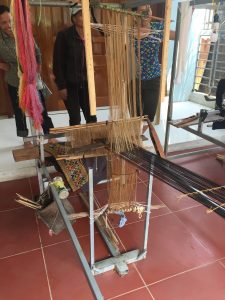Maren and I recently returned from several weeks in northern Vietnam, both retracing old routes and exploring a couple of new areas where textile creation has a rich tradition. We come away not so much with disappointment, but with a clearer understanding of the changing dynamics of the traditional village textile arts.
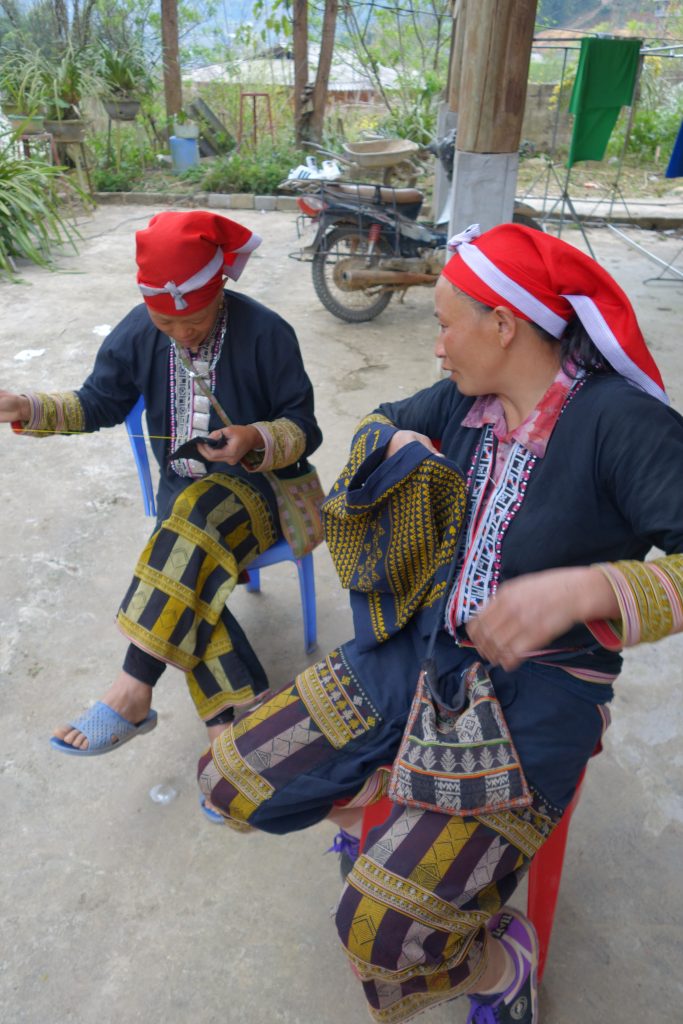
Two Red Dzao women from Lao Cai Province embroider handmade clothing with silk thread. Many of the Red Dzao in this area, despite the proximity of easier alternatives, still naturally dye and embroider their own cotton clothing.

Thi, our Lao Cai Province guide, translator, and friend for over a decade, still makes and wears a traditional Black Hmong outfit. [OK – the t-shirt and knit leg warmers are store-bought!]
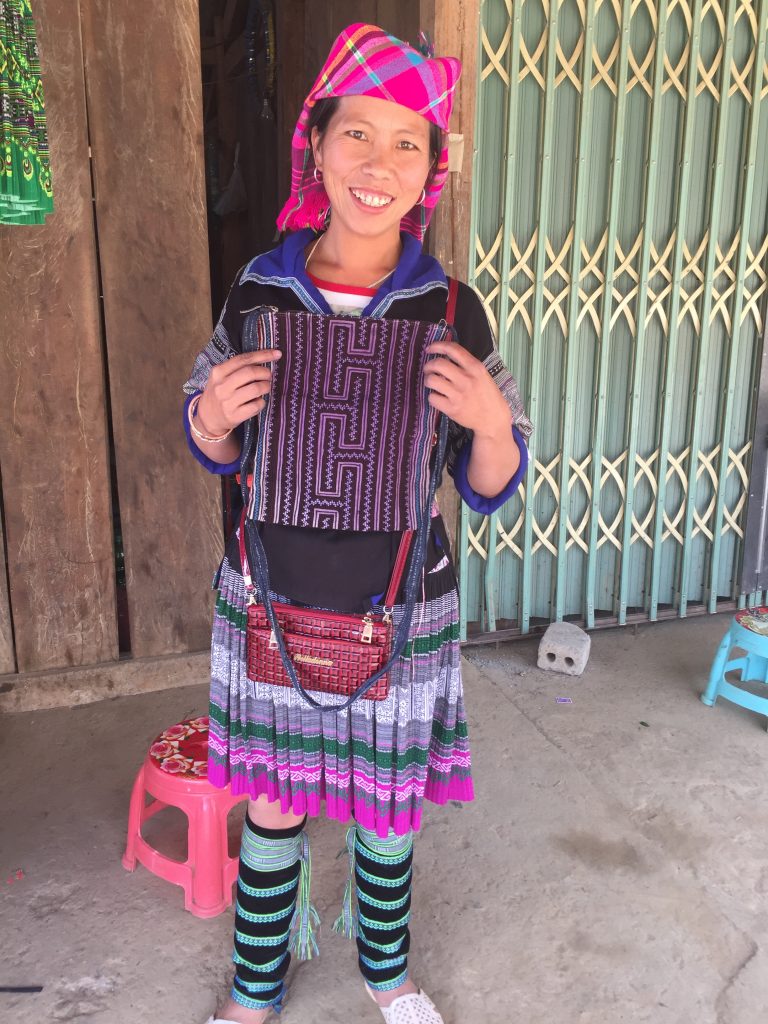
A Hmong woman in Yen Bai Province in northern Vietnam holds up a handmade shoulder bag. Like many locals, she is wearing a factory-made acrylic skirt printed with Hmong designs. However, she still wears the traditional leggings and jacket.
But that is the exceptional pocket. Roaring over the mountains of the region are winds of modernism, bringing with it the allure and pragmatism of inexpensive factory-made clothing. The most revealing example in NW Vietnam is the recent proliferation of the Chinese-acrylic pleated “Hmong skirt,” a bright polyester replacement for the traditional hemp and hand-spun cotton skirts worn by the previous hundred generations. These colorful knock-offs, complete with printed Hmong motifs, are machine-washable, light-weight, dye-fast – and about 1/30 the cost (!!) of a locally-purchased, handwoven hemp skirt.
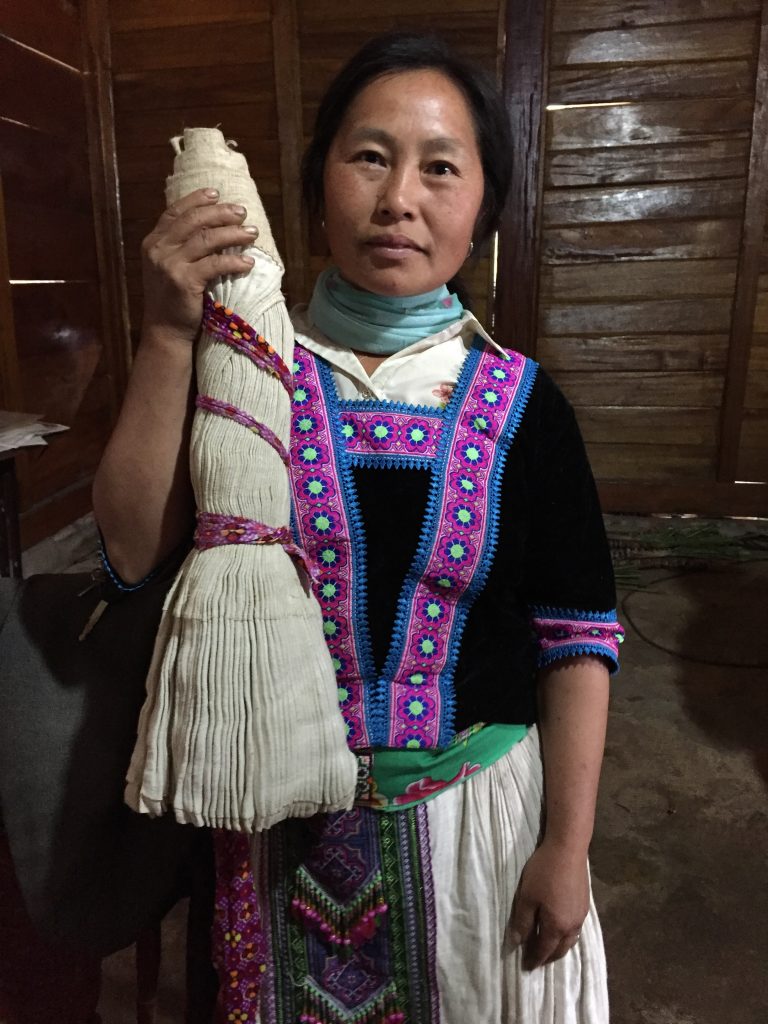
A Whoite Hmong woman holds up a hemp skirt made by a herself and her mother 10 years ago. She wears instead a cotton skirt spun and woven by a community of Lue people. The decorative stripes of color are traditional design, but the material is factory-made acrylic.
In a small White Hmong village outside Sin Ho in Lai Chau Province, a local explained to us that the village had fully stopped weaving its own hemp skirts about 10 years ago. The time required to raise and prepare the fibers was too dear – that time is now better spent expanding farm production or working in a shop or other business. Today, some villagers purchase lighter-weight cotton fabric raised and woven by their Lue neighbors to make their skirts. However, we noticed that many of the village women were wearing “Hmong-style” printed acrylic skirts. An elder brought out from her trunk a couple of older traditional hemp skirts she and her mother had made years ago from locally-raised hemp; the young children gathered around to see the artifacts and hear the story of what their elders used to do and wear.
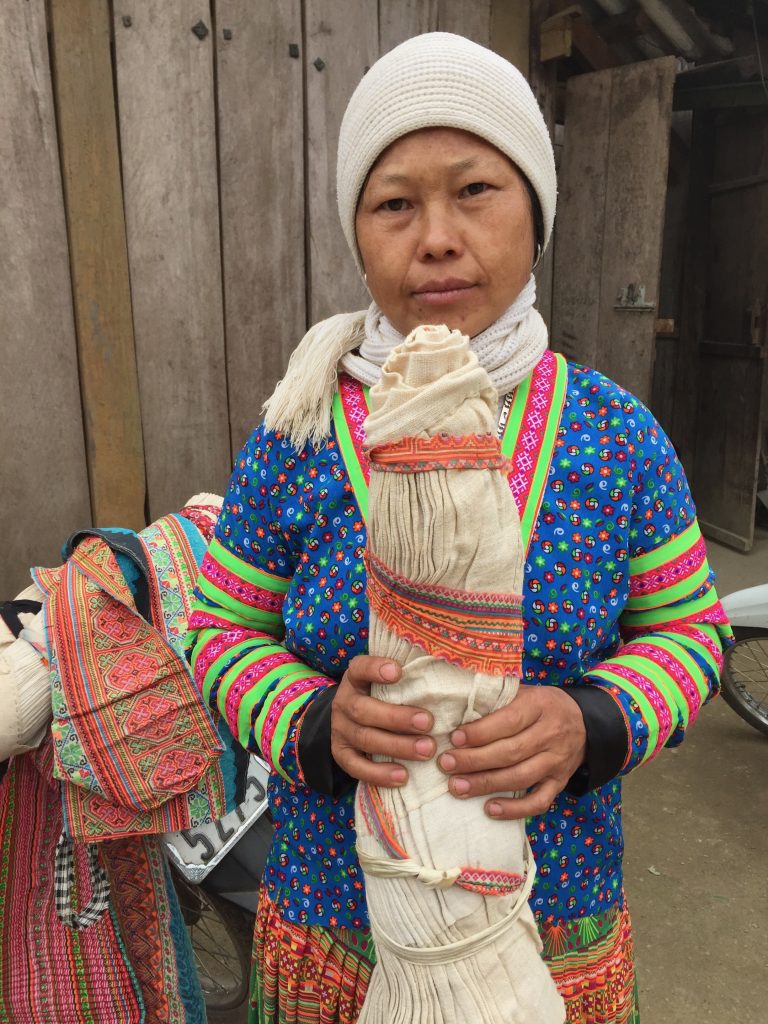
This White Hmong woman also holds up an traditional hemp skirt. She herself chooses to wear the inexpensive, light-weight acrylic skirts sold at the local market.
Near the village of Muong Lat in far west Vietnam, near the Lao border, we found a small pocket of weavers. Handmade looms made of wood and even aluminum bars graced the front work-area of several homes, and while the fibers they chose to use were often factory-made polycottons, the designs were traditional Tai Daeng. However, we noted that few locals wore what was being woven. “We weave these skirts to sell,” said a young 20-ish weaver through our translator. The market they sell to? Their neighbors across the border in Laos, where traditional wear is still the fashion, and regional economics less developed.
Near Mai Chau in Hoa Binh Province we found Hmong women who still spent many of their hours embroidering traditional motifs onto acrylic cloth for a skirt they planned to sell in town or to people stopping in their village. The embroidery thread is no longer reeled silk or handspun cotton, but brilliant acrylic yarn purchased in the store down the road. These hand-embroidered outfits, they said, were now only worn for special occasions, such as a wedding. The embroiderers themselves, sitting in the shade in a courtyard at their home, wore factory-made “Hmong skirts,” the designs of which were bright and familiar.

Maren (and to the left our White Thai translator, Hua) visits with two Hmong embroiderers to learn about their art and their markets.
To be sure, many in the Vietnamese Hmong communities are adamant about displaying at least some of their traditional wear when they are in their own community, but, from our perspective on this trip, most Hmong women are now regularly wearing these acrylic skirts.
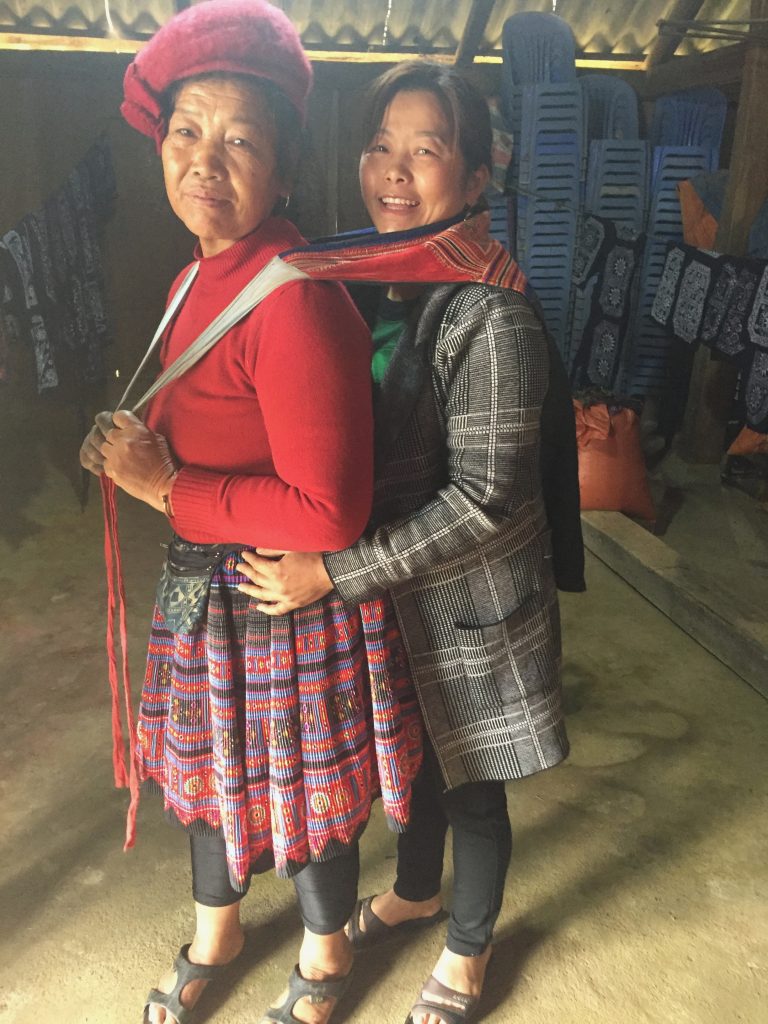
An Hmong woman playfully wraps an older traditional baby carrier around her daughter-in-law. What they are wearing is typical of the region these days – leggings are very popular!
In our 15 years of regularly visiting the region, we have seen a dramatic shift towards relying on factory-made clothing for daily wear. While we, as naturally-made textile enthusiasts, mourn the continuing loss of these arts, we do recognize that this shift comes during a time of stability, confidence, and growth. With electricity and the internet reaching the furthest corners of the region, and with a developing middle-class economy, we see advances in access to modern education, healthcare, transportation, and opportunities that we ourselves would want for our children. It is, indeed, a story that has happened all over the world; increase in wealth and industrialization leads to a decrease in the general use of things handmade.
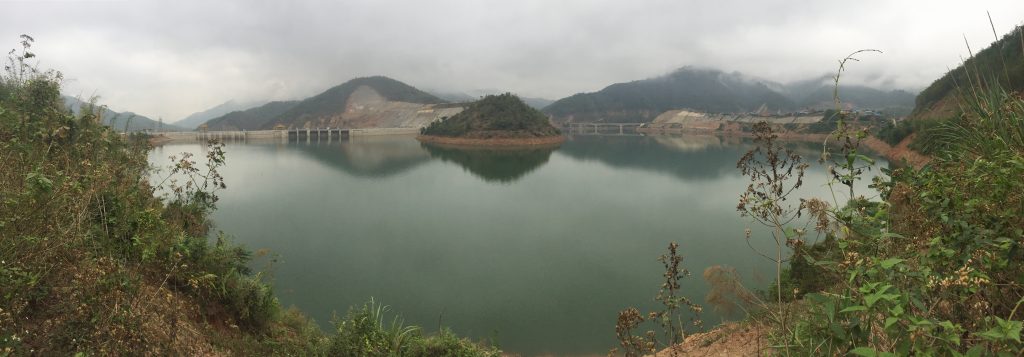
A new dam near Muong Lat in Thanh Hua Province brings electricity and modern infrastructure to what a decade ago was a very remote area.
All photos property of Above the Fray (HilltribeArt.com)

